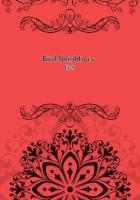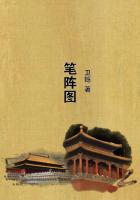For this reason the measure of representative government that had been granted each of the remaining British colonies in North America was carefully hedged about.The whole executive power remained in the hands of the Governor or his nominees.No one yet conceived it possible that the Assembly should control the Executive Council.The elective Assembly was compelled to share even the lawmaking power with an upper house, the Legislative Council.Not only were the members of this upper house appointed by the Crown for life, but the King was empowered to bestow hereditary titles upon them with a view to making the Council in the fullness of time a copy of the House of Lords.A blow was struck even at that traditional prerogative of the popular house, the control of the purse.Carleton had urged that in every township a sixth of the land should be reserved to enable His Majesty "to reward such of His provincial Servants as may merit the Royal favour" and "to create and strengthen an Aristocracy, of which the best use may be made on this Continent, where all Governments are feeble and the general condition of things tends to a wild Democracy." Grenville saw further possibilities in this suggestion.It would give the Crown a revenue which would make it independent of the Assembly, "a measure, which, if it had been adopted when the Old Colonies were first settled, would have retained them to this hour in obedience and Loyalty." Nor was this all.From the same source an endowment might be obtained for a state church which would be a bulwark of order and conservatism.The Constitutional Act accordingly provided for setting aside lands equal in value to one-seventh of all lands granted from time to time, for the support of a Protestant clergy.The Executive Council received power to set up rectories in every parish, to endow them liberally, and to name as rectors ministers of the Church of England.Further, the Executive Council was instructed to retain an equal amount of land as crown reserves, distributed judiciously in blocks between the grants made to settlers.Were any radical tendencies to survive these attentions, the veto power of the British Government could be counted on in the last resort.
For a time the installment of self-government thus granted satisfied the people.The pioneer years left little leisure for political discussion, nor were there at first any general issues about which men might differ.The Government was carrying on acceptably the essential tasks of surveying, land granting, and road building; and each member of the Assembly played his own hand and was chiefly concerned in obtaining for his constituents the roads and bridges, they needed so badly.The English-speaking settlers of Upper Canada were too widely scattered, and the French-speaking citizens of Lower Canada were too ignorant of representative institutions, to act in groups or parties.
Much turned in these early years upon the personality of the Governor.In several instances, the choice of rulers for the new provinces proved fortunate.This was particularly so in the case of John Graves Simcoe, Lieutenant Governor of Upper Canada from 1792 to 1799.He was a good soldier and a just and vigorous administrator, particularly wise in setting his regulars to work building roads such as Yonge Street and Dundas Street, which to this day are great provincial arteries of travel.Yet there were many sources of weakness in the scheme of government--divided authority, absenteeism, personal unfitness.When Dorchester was reappointed in 1786, he had been made Governor in Chief of all British North America.From the beginning, however, the Lieutenant Governors of the various provinces asserted independent authority, and in a few years the Governor General became in fact merely the Governor of the most populous province, Lower Canada, in which he resided.
In Upper Canada, as in New Brunswick, the population was at first much at one.In time, however, discordant elements appeared.
Religious, or at least denominational, differences began to cause friction.The great majority of the early settlers in Upper Canada belonged to the Church of England, whose adherents in the older colonies had nearly all taken the Loyalist side.Of the Ulster Presbyterians and New England Congregationalists who formed the backbone of the Revolution, few came to Canada.The growth of the Methodists and Baptists in the United States after the Revolution, however, made its mark on the neighboring country.The first Methodist class meetings in Upper Canada, held in the United Empire Loyalist settlement on the Bay of Quinte in 1791, were organized by itinerant preachers from the United States; and in the western part of the province pioneer Baptist evangelists from the same country reached the scattered settlers neglected by the older churches.
Nor was it in religion alone that diversity grew.Simcoe had set up a generous land policy which brought in many "late Loyalists,"American settlers whose devotion to monarchical principles would not always bear close inquiry.The fantastic experiment of planting in the heart of the woods of Upper Canada a group of French nobles driven out by the Revolution left no trace; but Mennonites, Quakers, and Scottish Highlanders contributed diverse and permanent factors to the life of the province.Colonel Thomas Talbot of Malahide, "a fierce little Irishman who hated Scotchmen and women, turned teetotallers out of his house, and built the only good road in the province," made the beginnings of settlement midway on Lake Erie.A shrewd Massachusetts merchant, Philemon Wright, with his comrades, their families, servants, horses, oxen, and 10,000 pounds, sledded from Boston to Montreal in the winter of 1800, and thence a hundred miles beyond, to found the town of Hull and establish a great lumbering industry in the Ottawa Valley.















